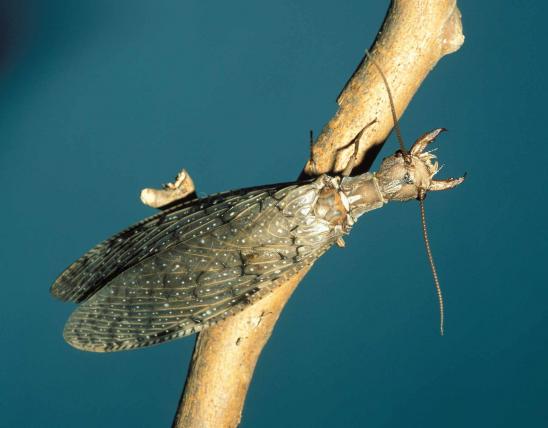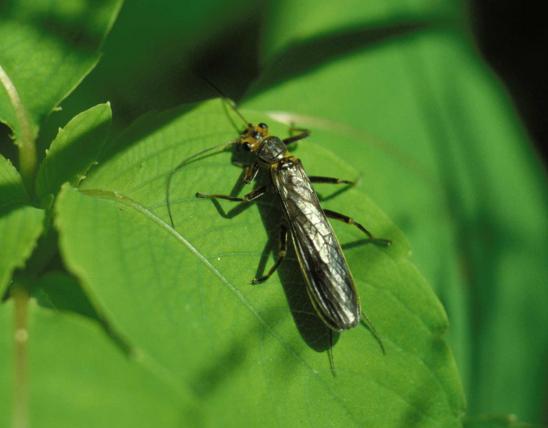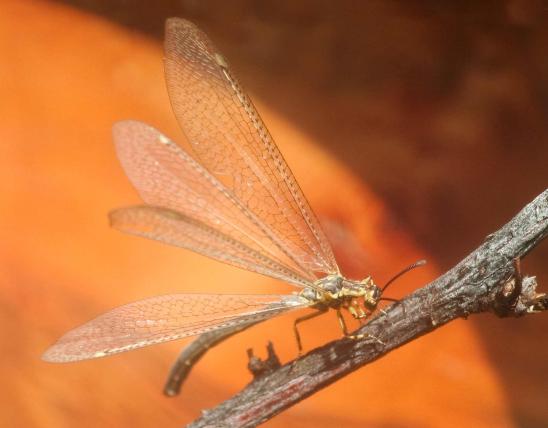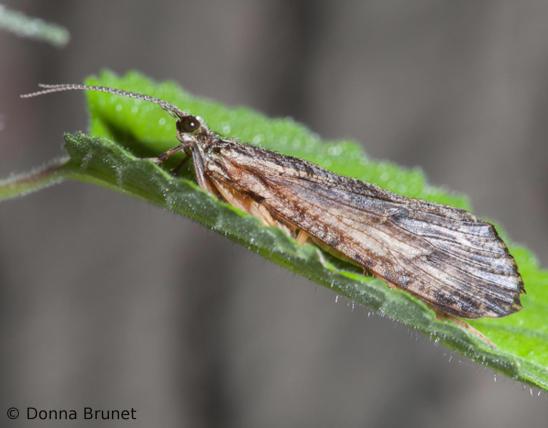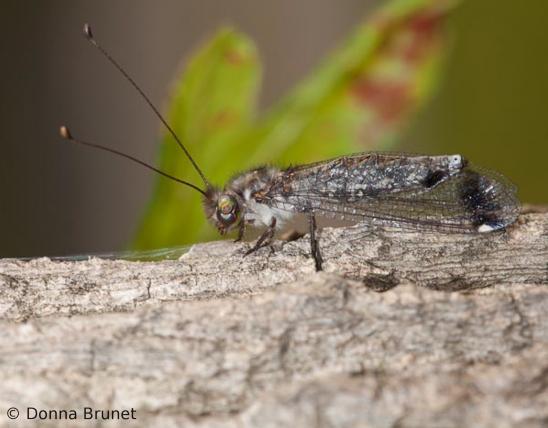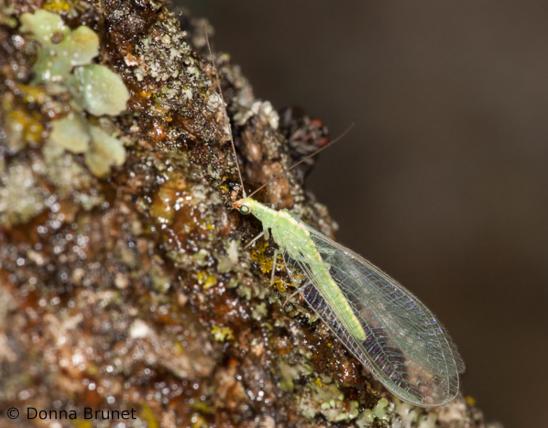
Adult fishflies look a lot like female dobsonflies, since all fishflies lack the large, tusklike pincers that male dobsonflies are famous for. Even though they do not eat as adults, fishflies can pinch hard if you mishandle them.
Male fishflies often have large, feathery or comblike antennae while those of females are thin and beadlike. Fishflies are usually light colored (gray, tan, rusty). Wings of most species are clear, gray, or light-colored, though members of one genus (Negronia) have black wings with white marks. At rest, the 2 pairs of wings are usually folded flat down the length of the body.
Fishfly larvae look a lot like hellgrammites (dobsonfly larvae) but usually do not grow quite so large. Unlike hellgrammites, they lack gill tufts below the abdomen, and the abdomen tip is forked, with 2 short, fleshy tails, and each tail has a pair of hooks. They are generally fairly light-colored; often tan with a reddish cast.
Similar species: Dobsonflies are larger and their forewings are usually more than 2 inches long, while those of fishflies are usually shorter; male dobsonflies have large, tusklike pincers and do not have pectinate (comblike or featherlike) antennae. Female dobsonflies have more pronounced mouth pincers than female fishflies and have a differently shaped pronotum (the necklike section just behind the head). Adult alderflies are smaller, usually 1 inch long or less, and are usually blackish. They typically hold their wings folded rooflike down their body. Also, alderflies lack ocelli (small, simple eyes); fishflies and dobsonflies both have ocelli on their heads, between the compound eyes.
Habitat and Conservation
Food
Status
Life Cycle
Human Connections
Ecosystem Connections




























